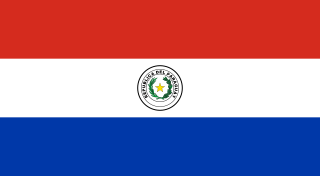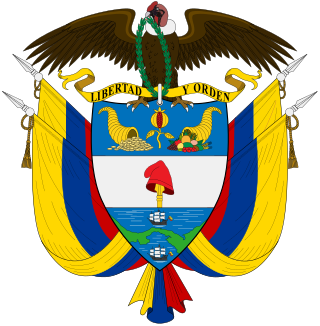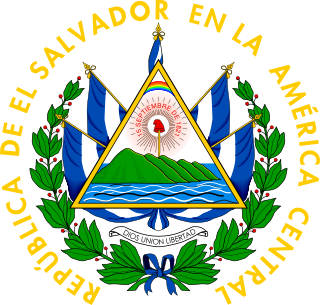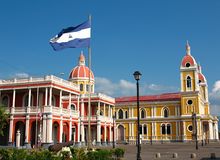
Central America is commonly said to include Guatemala, Belize, El Salvador, Honduras, Nicaragua, Costa Rica, and Panama. This definition matches modern political borders. Central America begins geographically in Mexico, at the Isthmus of Tehuantepec, Mexico's narrowest point, and the former country of Yucatán (1841–1848) was part of Central America. At the other end, before its independence in 1903 Panama was part of South America, as it was a Department of Colombia. At times Belize, a British colony until 1981, where English instead of Spanish is spoken, and where the population is primarily of African origin, has been considered not part of (Spanish-speaking) Central America.

The Federal Republic of Central America, originally known as the United Provinces of Central America, was a sovereign state in Central America which existed from 1823 to 1839. The federal republic was composed of five states: Costa Rica, El Salvador, Guatemala, Honduras, and Nicaragua. The federal republic was bordered to the north by Mexico, to the south by Gran Colombia, and on its eastern coastline by the Mosquito Coast and British Honduras.

The Phrygian cap or liberty cap is a soft conical cap with the apex bent over, associated in antiquity with several peoples in Eastern Europe and Anatolia, including the Persians, the Medes and the Scythians, as well as in the Balkans, Dacia, Thrace and in Phrygia, where the name originated. The oldest depiction of the Phrygian cap is from Persepolis in Iran.

The coat of arms of the state of New Jersey includes:

The flag of Belize was adopted on 21 September 1981, the day Belize became independent. It consists of the coat of arms of Belize within a white circle on a blue field with red stripes at the top and bottom.

The national flag of Costa Rica is based on a design created in 1848 and consists of two blue stripes, two white stripes, and a central red stripe which is twice as wide as each of the other four. The civil flag omits the coat of arms seen on the state flag, since the state variant is only permitted to be used by the government.

The flag of El Salvador features a horizontal triband of cobalt blue-white-cobalt blue, with the coat of arms centered and entirely contained within the central white stripe. This design of a triband of blue-white-blue is commonly used among Central American countries. El Salvador's flag is one of few that currently use the color purple, due to the rainbow in its coat of arms.

The flag of Honduras consists of three equal horizontal stripes of cyan, white and cyan, with five cyan stars in a quincuncial pattern at the centre of the middle stripe. The two outer bands represent the Pacific Ocean and the Caribbean Sea, and also represent the blue sky and brotherhood. The inner band represents the land between the ocean and the sea, the peace and prosperity of its people, and purity of thoughts. The five stars represent the five nations of the former Federal Republic of Central America and the hope that the nations may form a union again.

The flag of Paraguay was first adopted in 1842. Its design, a red–white–blue triband, was inspired by the colours of the French Tricolour, believed to signify independence and liberty. The flag is unusual because it differs on its obverse and reverse sides: the obverse of the flag shows the national coat of arms, and the reverse shows the seal of the treasury. It is the only national flag worldwide that has a unique design on each side. The flag consists of the same three horizontal colours as the flag of the Netherlands, which in turn was the inspiration for the French flag. It was revised in 2013 to bring the flag towards its original design. It has a ratio of 11:20.

The coat of arms of Colombia contains a shield with numerous symbols. Perched on top of the shield is an Andean condor holding an olive crown and the condor symbolizing freedom. The national motto, Libertad y Orden, is on a scroll in between the bird and the shield in black font over golden background. The condor is depicted as displayed and looking to the right.

The national emblem of the Democratic Republic of the Congo has changed several times since 1997. The current one was introduced in 2006 and depicts a leopard head, surrounded by an elephant tusk to the left and a spear to the right. Below are the three words which make up the national motto: Justice, Paix, Travail. It was adopted on 18 February 2006 by President Joseph Kabila.

The official coat of arms of the Republic of Costa Rica was designed in 1848, with modifications in 1906, 1964, and 1998. The latest change was the addition of smoke to distinguish the three volcanoes.
This armorial of sovereign states shows the coat of arms, national emblem, or seal for every sovereign state. Although some countries do not have an official national emblem, unofficial emblems which are de facto used as national emblems are also shown below.

"Six flags over Texas" is the slogan used to describe the six sovereign countries that have had control over some or all of the current territory of the U.S. state of Texas: Spain, France (1685–1690), Mexico (1821–1836), the Republic of Texas (1836–1845), the United States (1845–present), and the Confederate States (1861–1865).

The coat of arms of El Salvador has been in use in its current form since 15 September 1912.

The coat of arms of Haiti is the national coat of arms of the Republic of Haiti. It was originally introduced in 1807, and it has appeared in its current form since 1986. Since this Haitian national symbol does not conform to the rules of heraldry for a traditional coat of arms, then it could be considered a national emblem instead.

The Nicaraguan coat of arms was first adopted on August 21, 1823 as the coat of arms of Central America, but underwent several changes during the course of history, until the last version was introduced in 1971.
National symbols of Nicaragua are the symbols that are used in Nicaragua and abroad to represent the country and its people.

The national colours of Greece are blue and white.































